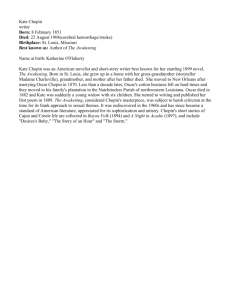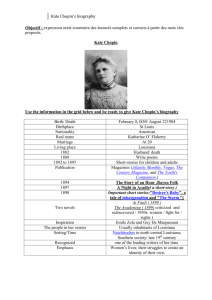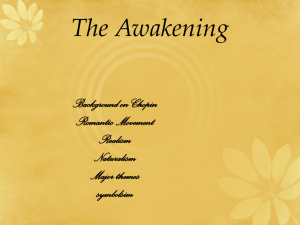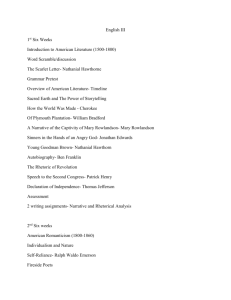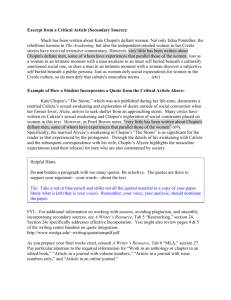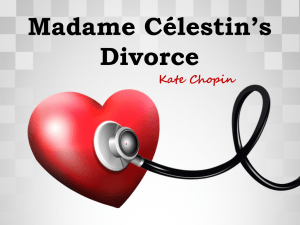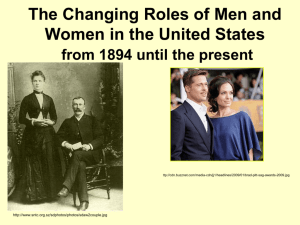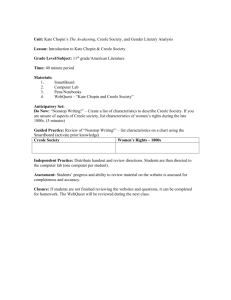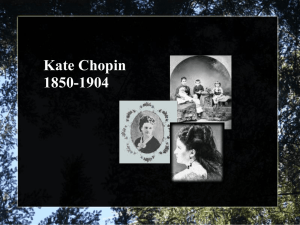Kate Chopin Notes
advertisement
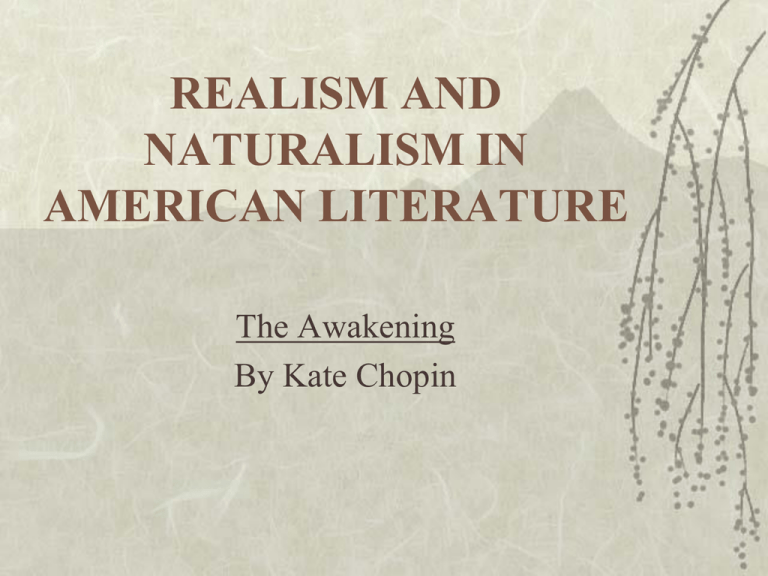
REALISM AND NATURALISM IN AMERICAN LITERATURE The Awakening By Kate Chopin Realism: the depiction of life as most people live and know it • • • • • • • Realism is a literary response to Romanticism Concentrates on the typical and average, avoids the unusual Deals with the immediate, the here and now Objective representation of life (plain and simple truths of life and relationships) Dealt with issues of ethics and conduct Subject matter centered around the common actions and minor catastrophes of a middle class society. Written in simple, clear and direct prose The Tenets of Realism (1870 -1910) • • • • • • Man has free will; what happens to him is due to his choices Life is shown and depicted realistically “a slice of life” Writers were objective and celebrated the individual Ideas dealt with the ordinary Writing reported the moral condition of ordinary people Emphasized the real over the imaginary Naturalism (1890-1910) • • • Naturalism is an extension of Realism Naturalism is a literary movement that attempts to apply scientific principles of objectivity and detachment to its study of human beings. Naturalistic characters can be studied through their relationships to their surroundings and nature. Beliefs of Naturalism • • • • • An individual is a helpless object Human existence is determined and influenced by natural forces Nature is indifferent to human problems Humanity has no control over fate Fate is determined by one’s environment • • • • • • Man does not have free will Man is the victim of large, impersonal forces and social-economical pressures Moral choice is forced upon man by heredity, his environment, and his relationships Man is animalistic Man cannot deny animalistic tendencies Man is the victim of his environment Characteristics of Naturalism • • • • • • Objective Examines life bluntly and crudely Pessimistic tone Overly descriptive At times reduces characters to degrading behavior to survive Ideas dealt with the negative Characteristics of the Period • • • • • Naturalism thrived in America from 1890 to 1910. (Although its influence lasted more than 20 years.) Between 1870 and 1890 the population of the U.S. DOUBLED Tenement housing issues grew in cities (Tenements held as many families as possible, no windows, poor ventilation, diseases spread rapidly, little running water, TB common) More growth in urban centers (cities) Major reasons for growth in cities: 1. Immigration 2. Freed slaves after the Civil War Major Naturalistic Writers • • Kate Chopin (Major work: The Awakening) Stephen Crane (Major works: The Red Badge of Courage and Maggie: A Girl of the Streets) Kate Chopin Background 1850 - Born Katherine O’Flaherty born in St. Louis, Missouri on February 8 1855 - Her father died in a train wreck when she was five years old. 1860 - Entered the Academy of the Sacred Heart run by an order of French Catholic nuns. During her studies and as a writer she was greatly influenced by Guy de Maupassant. He was a French realist author. She wrote often about his works in her diary. 1869 – Wrote “Emancipation: A Life Fable” and met Oscar Chopin 1870 Kate and Oscar marry and settle in New Orleans, Louisiana (He is six years her elder.) 1871 - birth of first son, Jean 1873 - birth of second son, Oscar Jr. 1874 - birth of third son, George 1876 - birth of fourth son, Frederick 1878 - birth of fifth son, Felix 1879 - birth of only daughter, Lelia; family moves to Cloutierville, Louisiana 1882 - Oscar dies of swamp fever 1884 - Kate returns to St. Louis to live with her mother, Eliza. She begins writing more frequently. 1885 – Eliza (Kate’s mother) dies 1890 – Chopin’s first novel is published titled: At Fault 1891 Her second novel Young Dr. Gosse and Theo is completed, but she is unable to get it published and she destroys the manuscript. 1899 The Awakening is published. The novel was not well received and her morals were criticized. 1904 Kate Chopin dies of a brain hemorrhage at the age of 54. Kate Chopin Image below from the archives of the Missouri Historical Society. "Whatever we may do or attempt, despite the embrace and transports of love, the hunger of the lips, we are always alone. I have dragged you out into the night in the vain hope of a moment's escape from the horrible solitude which overpowers me. But what is the use! I speak and you answer me, and still each of us is alone; side by side but alone.” In 1895, these words, from a story by Guy de Maupassant called “Solitude”, which she had translated for a St. Louis magazine, expressed a melancholy wisdom that Kate Chopin found compelling. This quote has been attributed as part of her inspiration for The Awakening.
